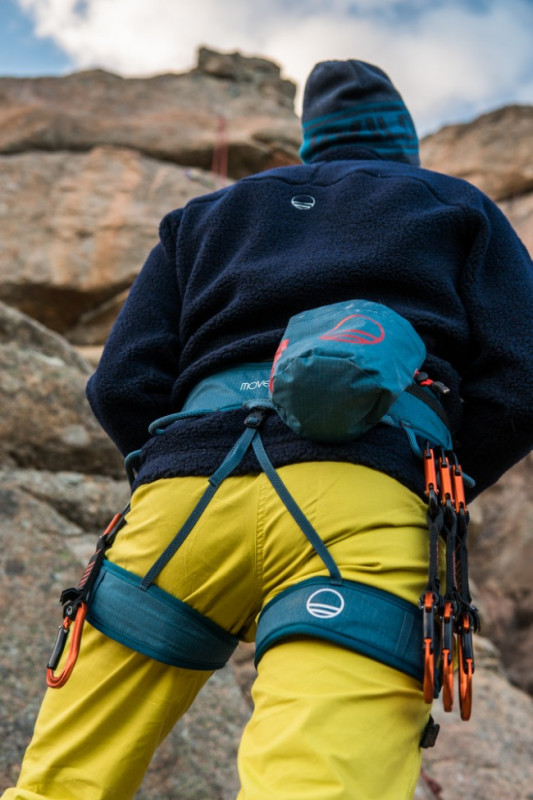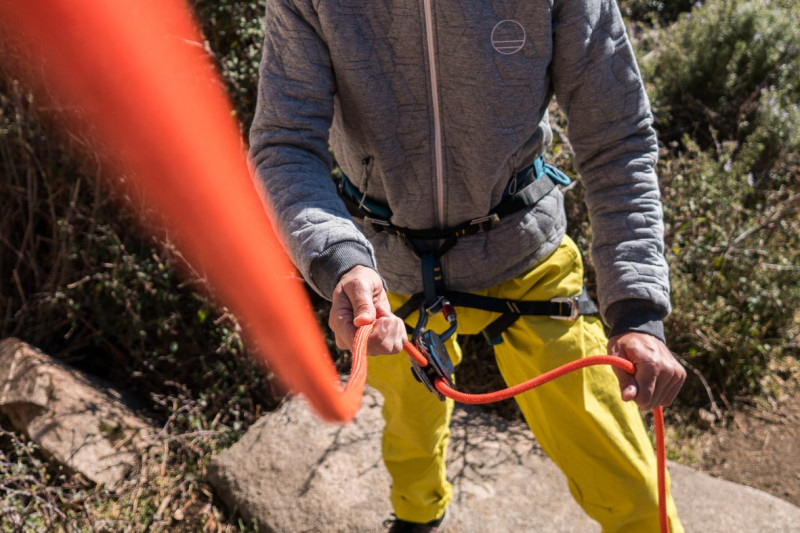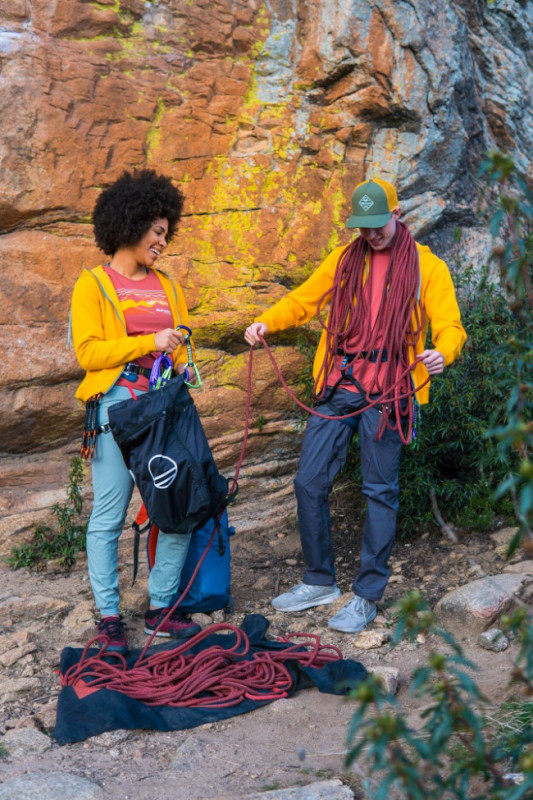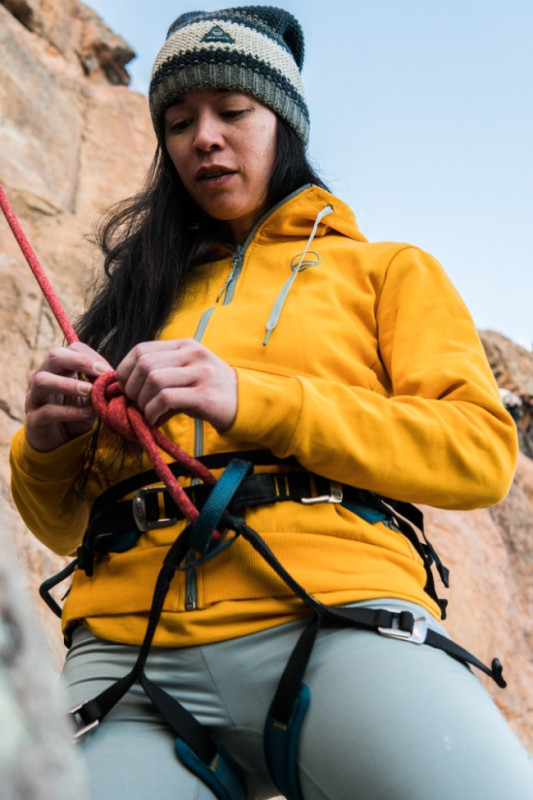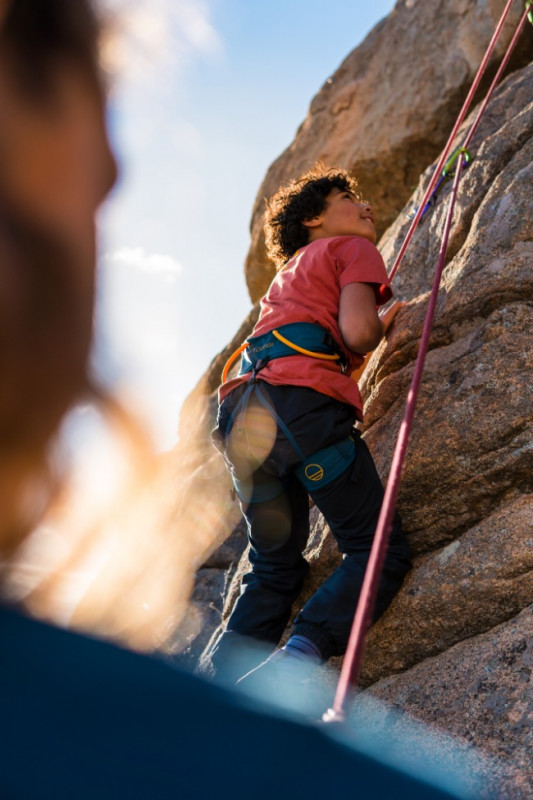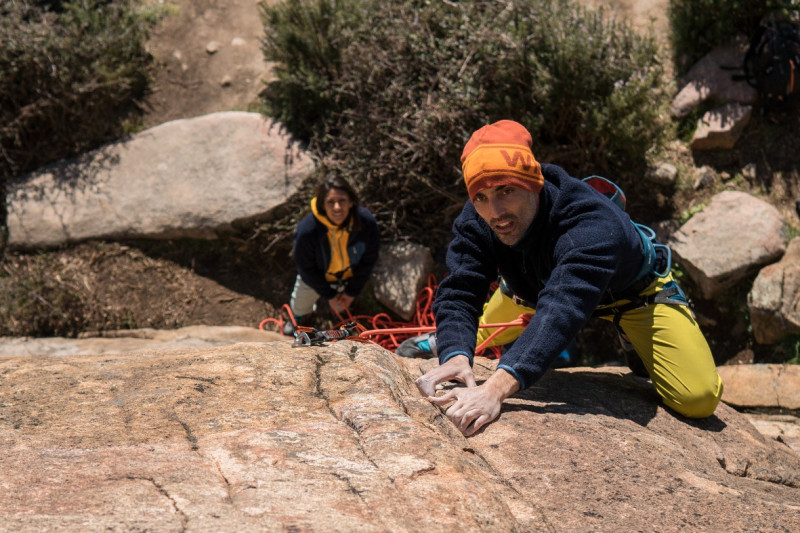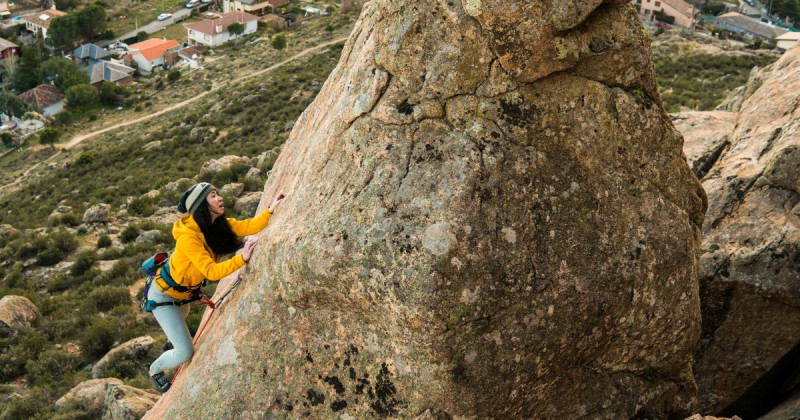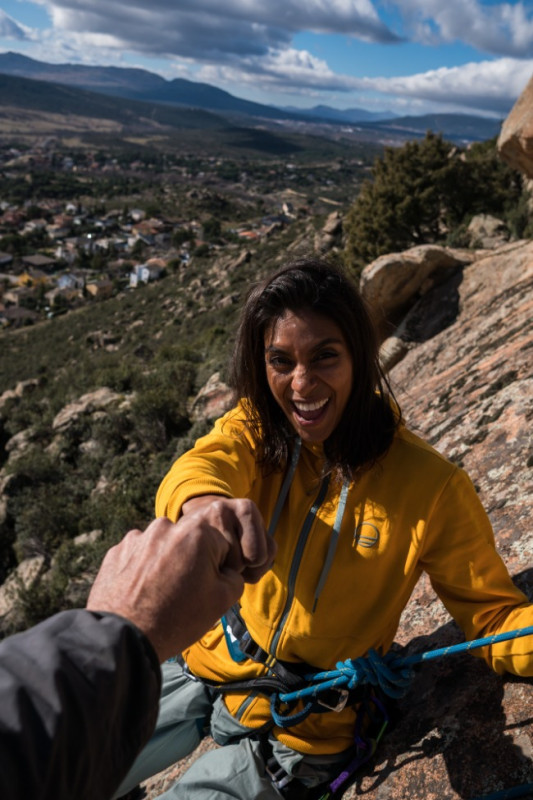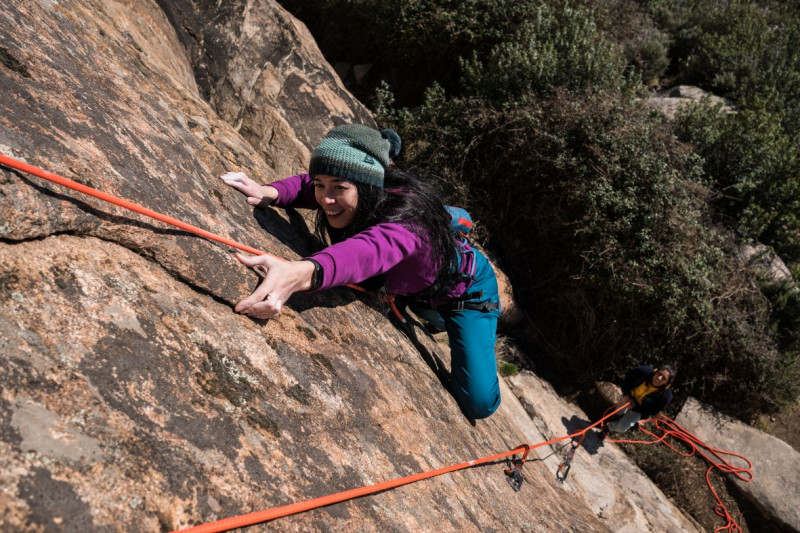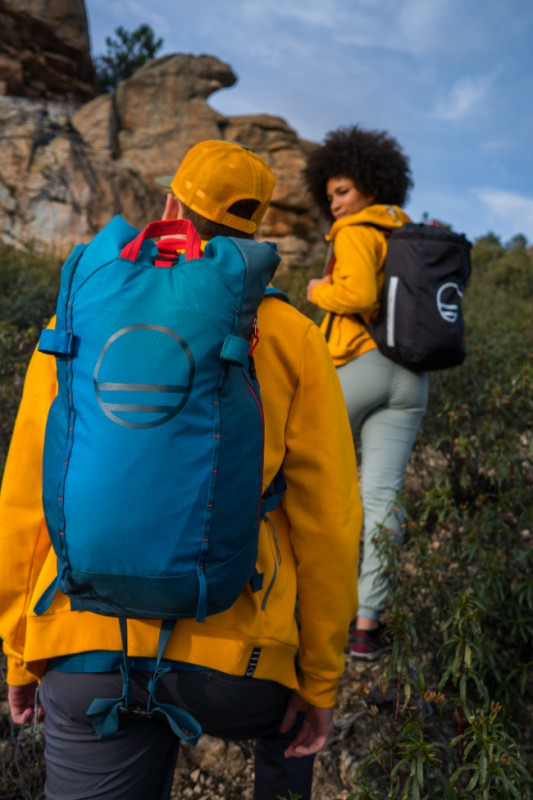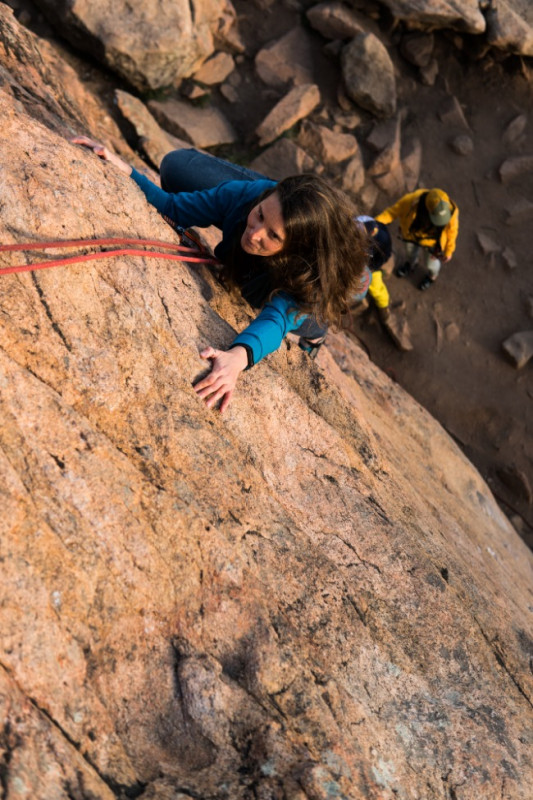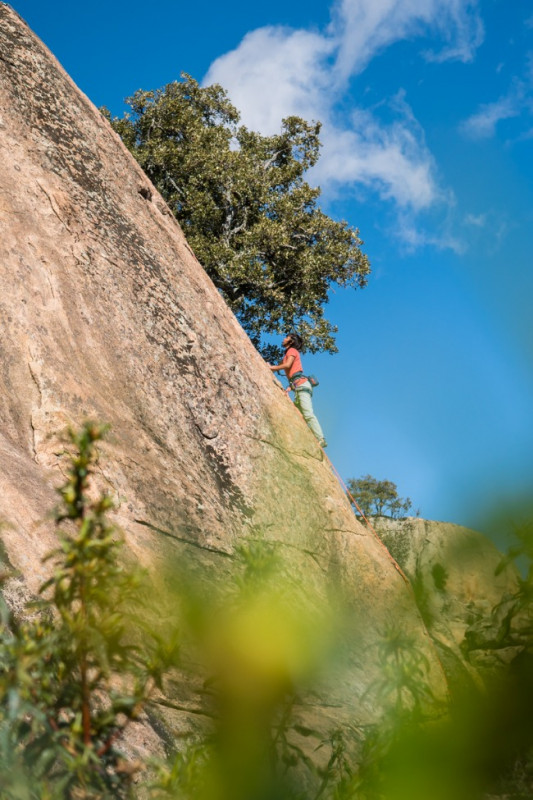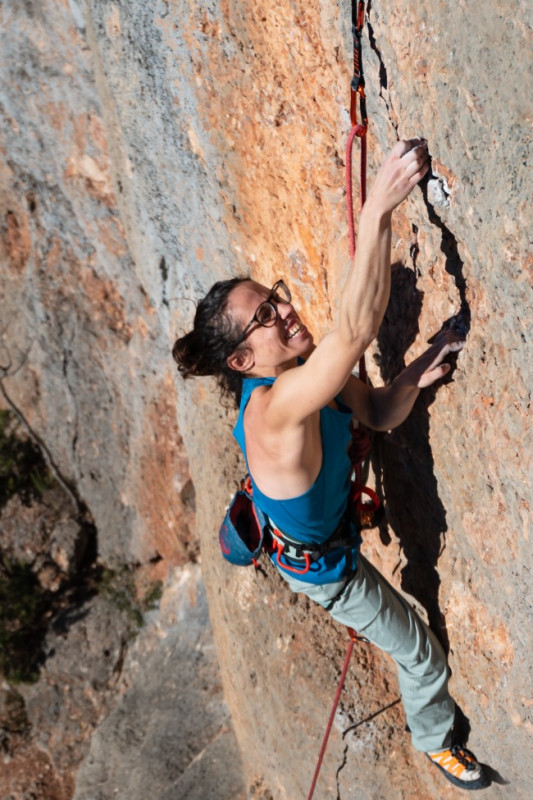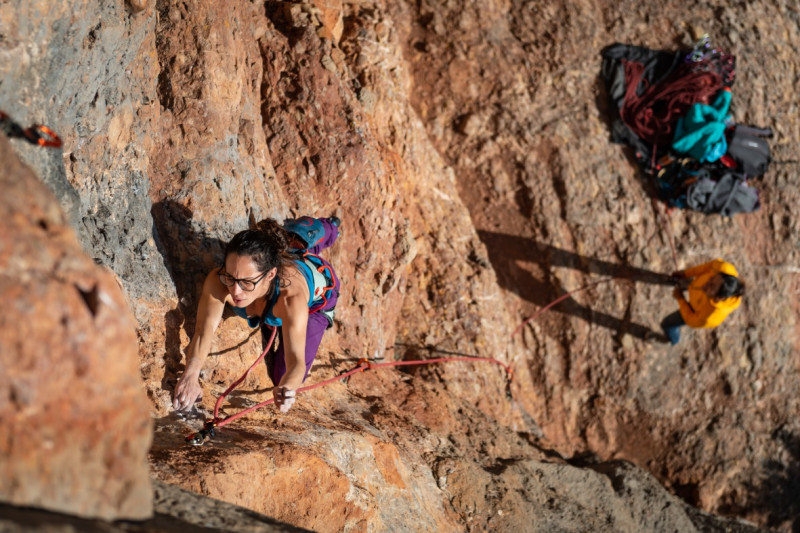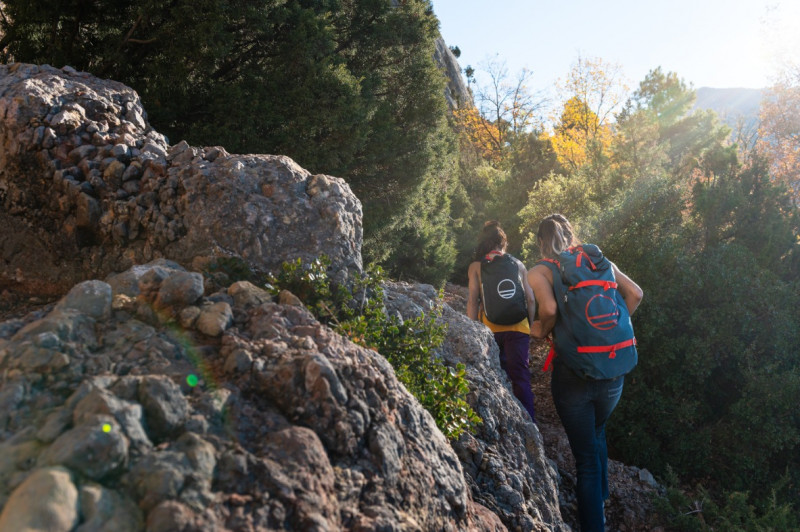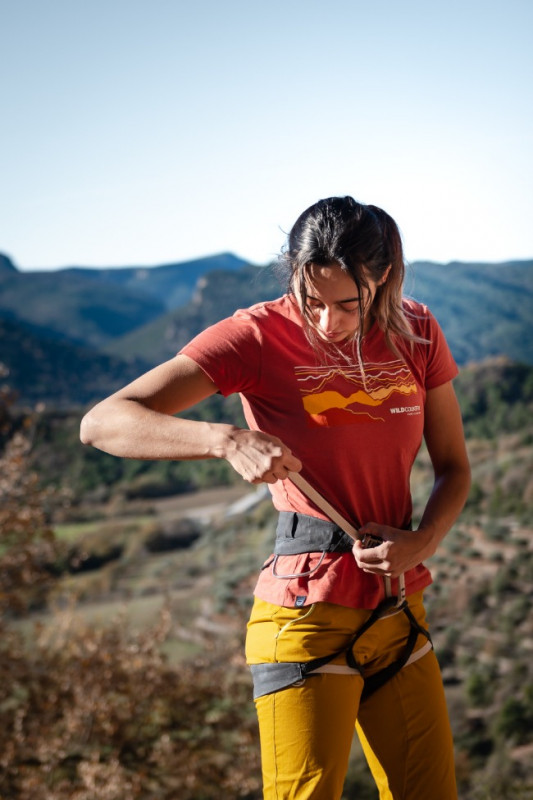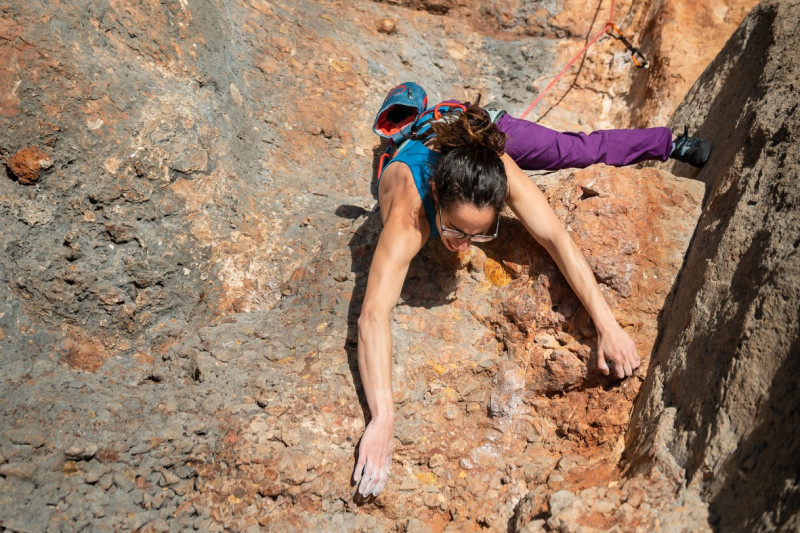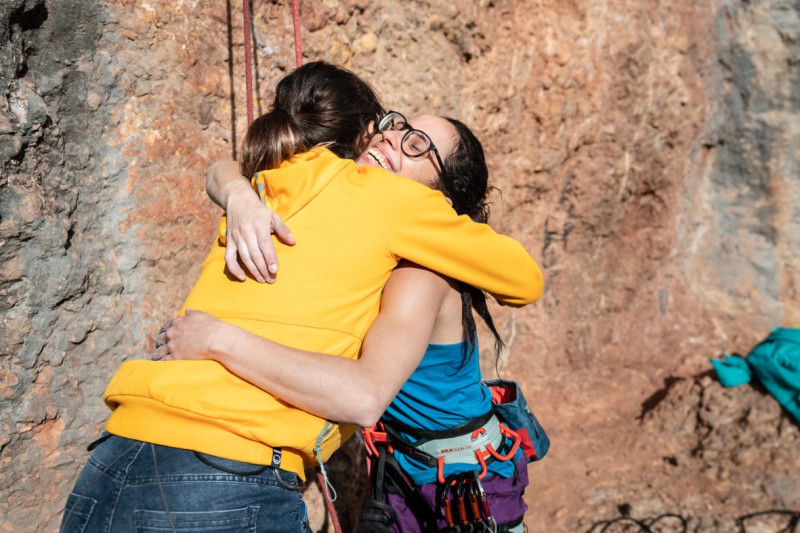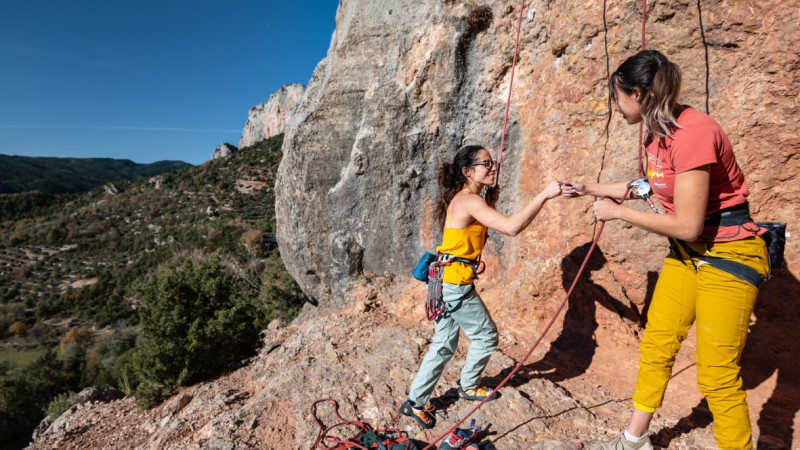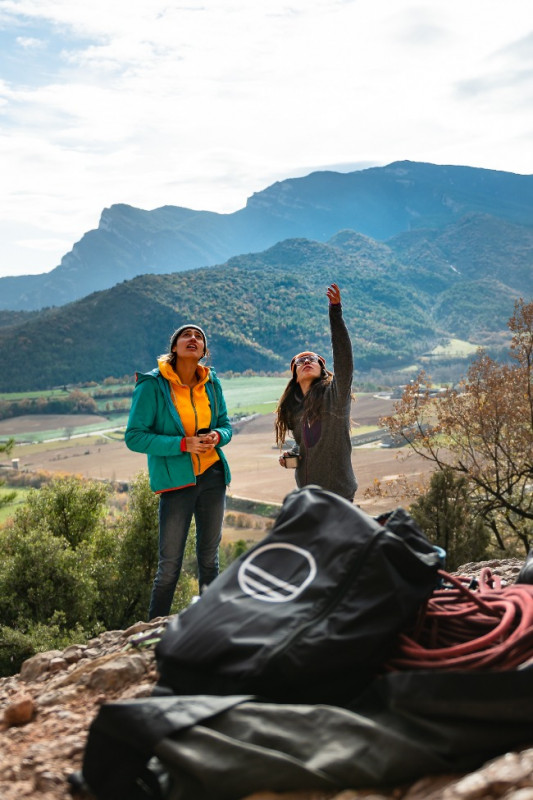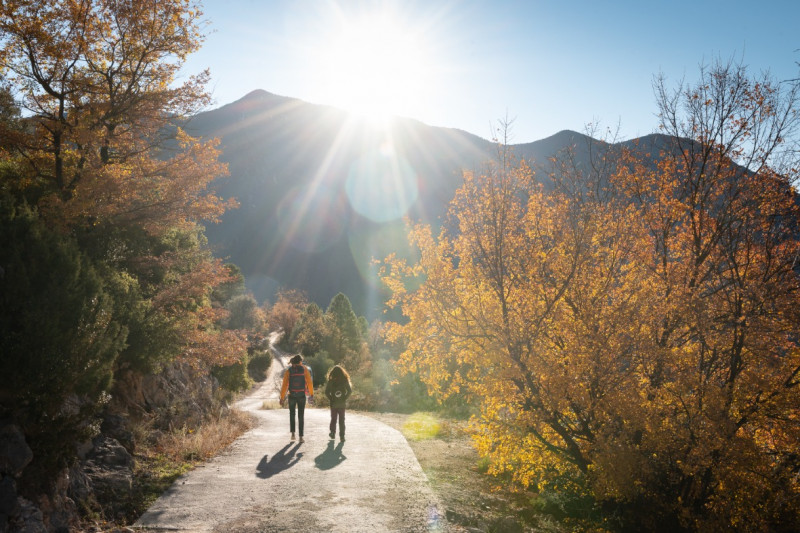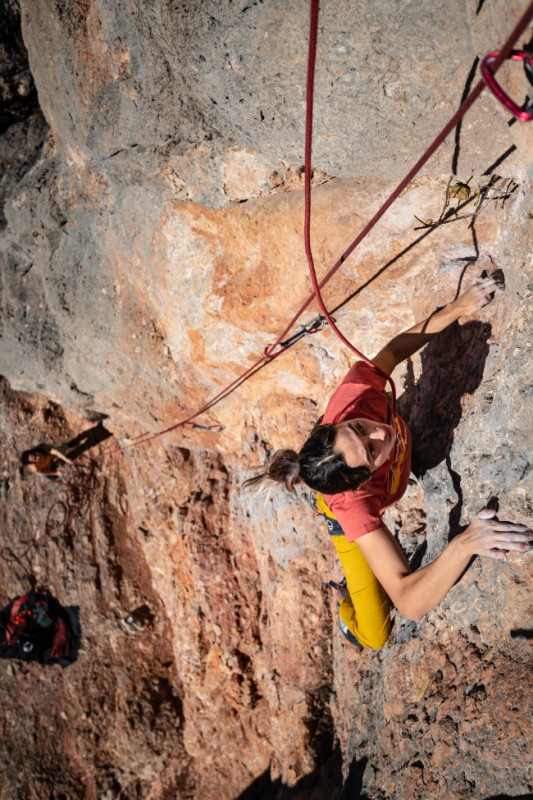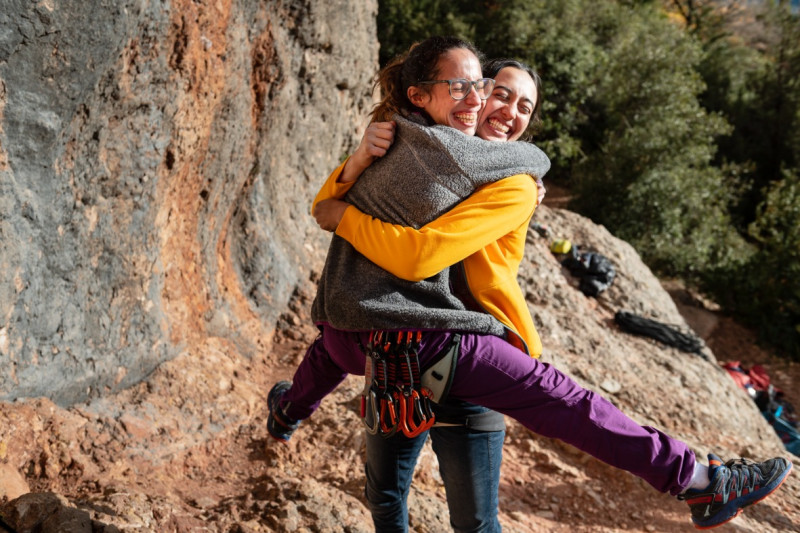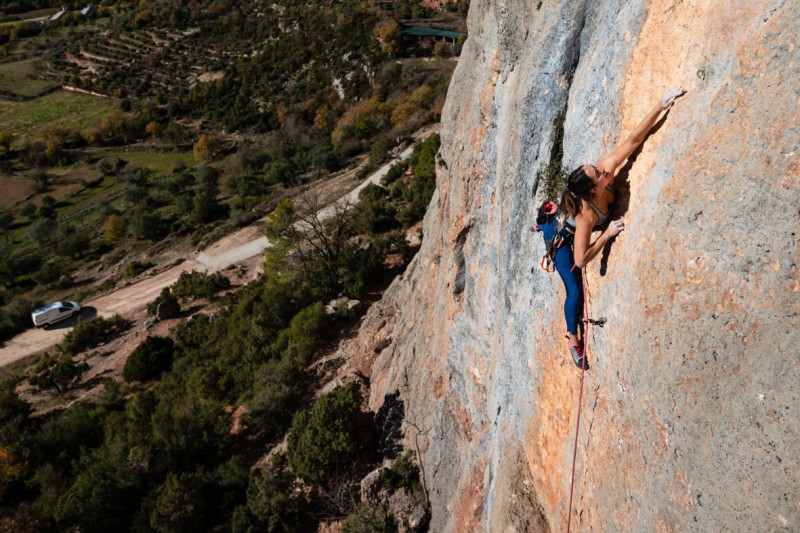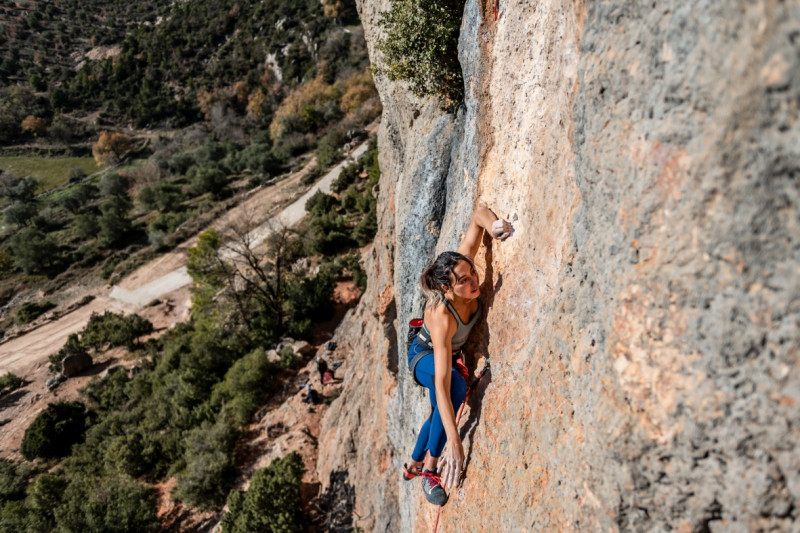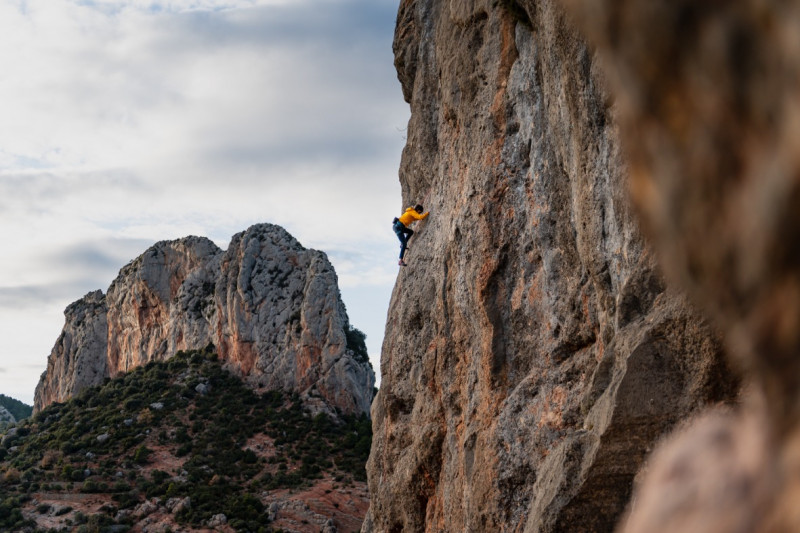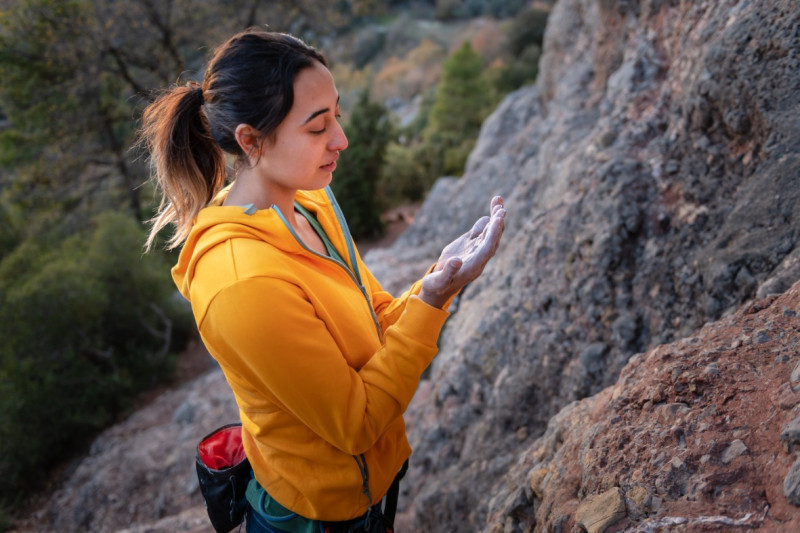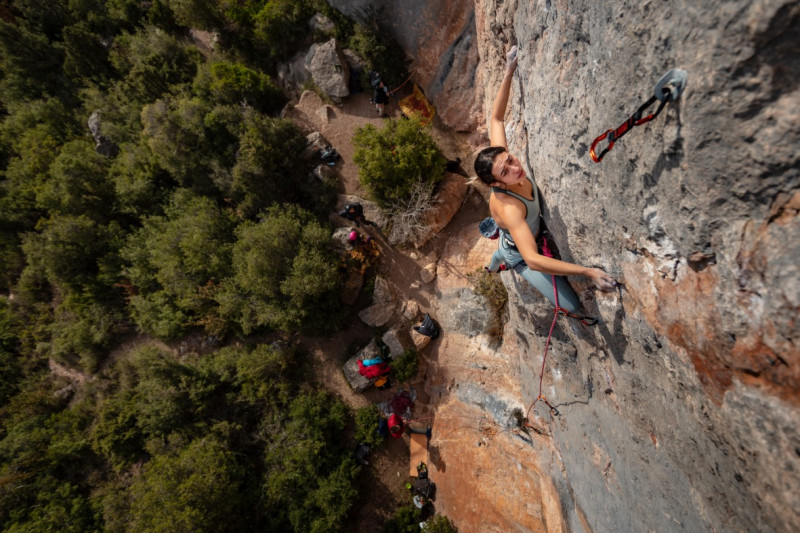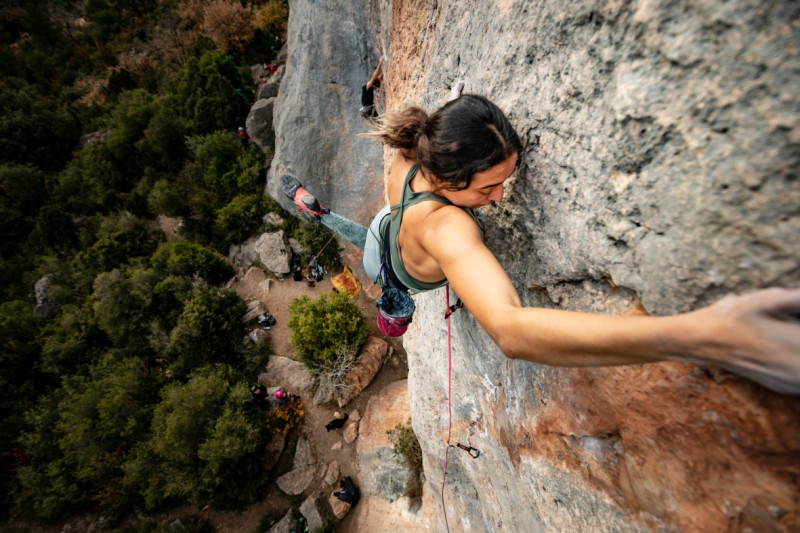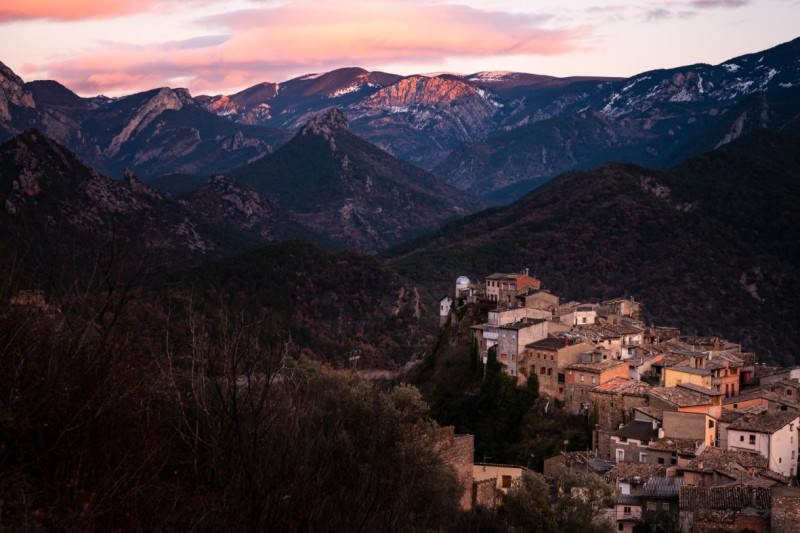Written by Heiko Queitsch
Photos by Talo Martin
Even as we design progressively new equipment to help every climber enjoy the sport and lifestyle, the age-old question of where to start hasn't disappeared. And the even more significant hurdle of overcoming ones' fear of heights, falling, and trusting your gear still lingers.
Whether you are looking to tie in for the first time or are an experienced climber wanting to introduce friends, these questions and fears are normal–a little secret; even top Wild Country athletes have fears of height and exposure.
So, to help you get started, we sat down with Wild Country friend Heiko Queitch, a climbing coach and trainer from Germany, to talk about climbing, fears, and learning the ropes.
From the gym to the outdoors, climbing is becoming ever more popular. So what do you suggest as options to safely and comfortably start climbing?
One option is to learn from experienced friends, while the other option is to take a course at a climbing school or climbing association from professional instructors.
What benefits does taking a course offer instead of having friends or other climbers teach you?
Both approaches can teach you safety and technique, but I believe learning from professionals is a better option giving you a holistic program and not just how to use a belay device and put your feet on the wall. It is important to remember that coaches and instructors know how to teach in ways that private individuals often don't. This even includes observing characteristics in your climbing, technique, and even fears that can help you excel comfortably right away.
What material do you suggest purchasing to start?
Often, even your friends will have gear for you to borrow, and a climbing school will be able to loan you everything, so really, you shouldn't need to purchase anything to try it. Then if you enjoy it, I would go into a reputable mountain sports shop for advice on your first essential purchases of:
• A good, comfortable, and suitable harness.
• Shoes that fit correctly and aren't overly aggressive
• A belay device
• A helmet (if you are outdoors, depending on the crag)
If you keep going, you can add some extra locking carabiners, then start to think about a rope and quickdraws. As you continue climbing, the routes you choose will help you understand when it is time for slings, Rocks, and Friends..
Let's talk fears for a minute, as this is a hurdle in climbing almost everyone faces to some degree. So what are reoccurring fears you see from the beginning?
Whether it is height, the holds, or falling, fears quickly show up for most people. Often, in the beginning, it is about learning to trust the material you wear on your body and at the same time, the rope and the belayer. Besides teaching you the systems, a good trainer can recognize these fears quickly through your behavior and how you move on the wall. Then each fear can be addressed and appropriately worked on through incremental steps.
So you are saying these fears are normal and common?
Yes. And strictly speaking, it is also good to have fears and allow them to show as they are supposed to protect us from danger. But, if you learn to assess situations and master the craft, you can also become a master of your fears.
How do you help instill confidence around climbing equipment such as the rope, knots, and harness so that technique and fun can become the focus in your courses?
I attach great importance to approaching things step by step in my courses. For example, we break each step down, first learning how to put on the harness safely, then the independent steps for tying a knot and showing you that it holds. Then, teaching you how belaying and the belay device controls the rope and catches a fall. We then test the whole system right off the ground to start building trust and an understanding of what the climber and partner are doing.
This process helps you break through the barriers bit-by-bit as nothing would be worse than having groped your way up a 30-meter route to face sitting on the rope for the first time–Something I observe others doing all too often.
You mentioned earlier learning to trust your belayer. How do you suggest doing this for first-time climbers or experienced athletes?
Belaying is a craft that takes time and practice to master; in courses, like everything else, the technique is taught through a systematic process. Then as the climber, you first learn to trust the system and the belayer directly off the ground so you can start to climb freer as you ascend. And, of course, actually stopping to do a partner check of the knot and belay device before climbing is essential for all levels. Both steps are a process even experienced climbers should repeat with each new partner, as not everyone can belay well. It takes time to learn to trust each other and give an excellent belay to your partner's style, so don't be offended if they ask to check your system or share how they like rope management.
CLIMBING FOR ALL
BUILDING YOUR SKILLS, AND FACING YOUR FEARS
by Heiko Queitsch
5.0 minute read
No matter how experienced one is at climbing, falling is a hurdle that is never easy to overcome. So how does one start learning to fall?
First, I would say learning to trust the system. On top-rope, one does not actually fall as there should be no slack in the system. But when you slip, understanding that the rope holds and your partner will catch you is the step-by-step method I apply as you learn to climb and increase in height.
How do you suggest practicing to fall?
Whether you are indoors or out, to actively work on the fear of falling, find a slightly overhanging route with no edges, ledges, or rock bands, and if in the gym, no big volumes. Then slowly build up with your belayer. First, have them catch you close to a bolt with controlled warning and eventually work up to climbing above your last clip and falling mid-move.
Even our athletes share stories of their anxiety around falling, so beyond these entry steps, what do you suggest?
Of course, the most crucial point is that I have a belayer who knows their craft. This goes beyond holding a fall to include learning how to give a dynamic belay, belaying close to the ground, understanding weight differences, having a sensitive hand for the rope and device, and adapting to each situation. There is a lot here, which is why I consider it a craft to learn methodically, and then as I always say, practice makes perfect.
On the sharp end, there is also needing to know how to behave–This includes body tension, not jumping away from the wall, and, if possible, not grabbing the rope. Adapting to the different route situations both as the climber and belayer takes time and practice.
Through your experience, as the sport grows in popularity and climbers start at increasingly younger ages, do you see this as a good family activity?
Absolutely! The combination of enjoying a super beautiful sport that you can practice together as a family is great. Not to mention, there are so many other exceptional components like being in nature, spending quality time together, and everyone having the opportunity to participate according to their ability level or just simply enjoying the movement.
Do you see any direct benefits to starting as a child over beginning as an adult?
If you want to keep addressing fears, children–of course with exceptions–often have fewer fears. This openness helps them move beyond being scared and then adapt more quickly to the movement of the sport and enjoy the thrill.
Is there an age you suggest for children to start?
I don't think there is a recommendation. Climbing is a natural need of the little ones, so they can start as soon as they feel like it and have fun! The most critical aspect is fun stays in the foreground, and no one pushes or forces things. So if you are outside and your little ones don't feel like climbing that day, maybe it is a better day for building a camp out of sticks and stones, which should be great for most parents too.
As climbers move from gyms to the crags, what should they be aware of?
I always advise on a few significant points here, but these are basic points. And while not trying to deter people from enjoying outdoor climbing, I suggest not moving from the gym to the rock without an instructor or partner experienced in outdoor climbing.
First, without even going into trad climbing, there is the difference of protection. In contrast to a gym, most fixed routes have fewer bolts, often spaced further apart. So it is best if you are comfortable both on lead and belaying. You also need to understand how to place quickdraws on lead at the intermediate points and the top anchor.
The rock quality also needs to be addressed, as not all rock is bombproof, which means you have to be aware of falling rock. Thus, a helmet is mandatory at certain crags, especially for the belayer.
Lastly–but not by order of significance–always remember that we as climbers are guests in nature and need to behave accordingly. Thus, leave the rock and nature as you found it, take your garbage and everything else you brought home when you leave. And if you see other trash pack it out as well. Ultimately, leave nature clean for others to enjoy as well.
What criteria do you use to choose an area if you've never been there or for visiting with new climbers?
It always depends on what the goal is. For example, if it is a beginner's course, it is excellent to find top rope routes that can be safely accessed above and aren't too long for climbing. In a lead course, the routes should be well secured without much runout. For trad climbing, it is routes that can be easily protected, and the gear can be placed from comfortable stances. If I haven't visited an area before, guidebooks are great resources for this information, talking to friends, or even stopping in at the local climbing shop.
As our sport grows, how can we help protect it and nature?
It is beautiful that more and more people are enjoying the most beautiful sport in the world! With that said, we all need to work together to protect it and nature. But, as the old hands, we can think of ourselves as the role models and show it right by keeping the crags clean and not damaging the rock. This is a responsibility everyone from the gyms to clubs to private climbers has. It is also essential to recognize and maintain the general climbing rules in various areas. This access, maintenance, and rules are often an agreement from both climbing clubs' hard work and the local authorities, so respecting them and doing your part is essential. If we respect our sport and nature as a community, we can make it so that everyone can experience these beautiful places as we do together in the years to come. As the saying goes, ‘Wie man in den Wald hineinruft, so schallt es heraus’: 'The way you shout into the forest is how it echoes back.'
What criteria do you use to choose an area if you've never been there or for visiting with new climbers?
It always depends on what the goal is. For example, if it is a beginner's course, it is excellent to find top rope routes that can be safely accessed above and aren't too long for climbing. In a lead course, the routes should be well secured without much runout. For trad climbing, it is routes that can be easily protected, and the gear can be placed from comfortable stances. If I haven't visited an area before, guidebooks are great resources for this information, talking to friends, or even stopping in at the local climbing shop.
As our sport grows, how can we help protect it and nature?
It is beautiful that more and more people are enjoying the most beautiful sport in the world! With that said, we all need to work together to protect it and nature. But, as the old hands, we can think of ourselves as the role models and show it right by keeping the crags clean and not damaging the rock. This is a responsibility everyone from the gyms to clubs to private climbers has. It is also essential to recognize and maintain the general climbing rules in various areas. This access, maintenance, and rules are often an agreement from both climbing clubs' hard work and the local authorities, so respecting them and doing your part is essential. If we respect our sport and nature as a community, we can make it so that everyone can experience these beautiful places as we do together in the years to come. As the saying goes, ‘Wie man in den Wald hineinruft, so schallt es heraus’: 'The way you shout into the forest is how it echoes back.'
Written by Anna Hazelnutt
Photos by Tristan Hobson
The beautiful part about the try-hard is that it has many faces. For some, it’s an internal voice that says ‘keep going!’ when they’re about to give up. For others, it’s a subtle stream of decisions that drives them to the anchor, whether they are moving at their limit or simply flowing up a beautiful, juggy line. For my friend Sónia, it’s a thunderous roar that propels her to the next hold, and for me, it’s an intentional, deep exhale that encourages my body to move past any mental blocks and keep driving upwards.
I invited Sónia to come sport climb with me at my local crag, Coll de Nargó. We met bouldering in Albarracín a few months ago and couldn’t stop laughing the entire time. Not to mention how incredible it is to have a strong woman to climb with in a very male-dominated scene. Sónia is through and through a boulderer, and she told me she was absolutely terrified of rope climbing! Although she dominates on blocs, leading with a rope offers an entirely different set of mental challenges. I could relate, because I was in the exact same boat, having almost exclusively bouldered up until I moved to Catalunya for a few years. Additionally, I still get scared on the wall and have to navigate through numerous mental roadblocks. So, the goal for the weekend wasn’t necessarily to send hard, or to climb a certain number of routes. It was to have fun and try hard, whatever that entailed.
Off we set on our mini adventure, both of us excited to be outside on such a beautiful day and have some fun climbing together.
To warm up, I thought it would be nice to set up a top rope on a technical route called Todo por la Cara. With fun stemmy sections and a heady upper mantle crux, it felt like a good physical and mental warm-up. Sónia set off on the toprope, which was the perfect start to the day to ease into leading.
With the confidence boost and positive energy, I suggested we try Kundalini, just to our left, and see if she wanted to lead it after I put the draws up. From the start I could tell that the climb was going to be a bit harder than the last one as I found myself full crimping and locking off on less-than-decent holds. Hanging at the chains, I offered to set up a top rope for Sónia, but she shouted up that she instead wanted to push past her fears and go for the lead! What came next was inspiring. Move by move, Sónia audibly pushed through a myriad of mental blocks to climb one, two, three bolts higher. As the cruxy moves off the ledge appeared, she decided she was proud of her attempt, but would prefer to come down.
TRY-HARD
A UNIVERSAL EXPERIENCE
by Anna Hazelnutt
5.0 minute read
The head game in sport climbing is a delicate dance, and while some people find their flow by pushing through fear immediately, others get emotionally exhausted if they push too early in the session. As the belayer, this creates a tricky balance between encouraging your partner to keep going, and knowing when to support them in coming down. I knew at the time that Sónia was physically capable of climbing the route, but wanted to make sure we were still having fun, which was the priority of our trip. So I lowered her, cleaned the route, and said, ‘You should instead go for a lead send of Todo por la Cara, the climb we did on top rope!’
Then came the try-hard.
The first few bolts were smooth, easy movements on good holds. Navigating through the climb, I could sense Sónia relaxing into the flow. I watched carefully from the belay, yelling up the occasional, ‘venga titana!’ as she clipped each draw. Then she froze. It was the stemmy crux, and being quite a bit shorter than I, instead of easily clipping the draw, she would have to execute a few moves of the sequence first. I kept yelling encouragement because I had no doubt that she was fully capable of sending this climb!
Sónia called down to me,‘No puedo hacerlo!’ I can’t do it! She entered the moment on the wall that I knew all too well- should she embrace the chaotic unknown and keep pushing forward, or return to the safety of her last bolt? I could sense her in purgatory, unsure about which path to take; as she toiled over her decision, the pump would only increase.
I knew this was the time to push. I reassured her, of course, you can do it; you already have! There was a jug just above the mantel, and I knew if she got past the crux, she’d have the determination to follow through to the anchors. Sónia down-climbed, shook out, and began to set off, and then down-climbed again. She cycled through these stages for a grueling few minutes until she decided it was time. Time to try hard. She unleashed her power breaths, the ones I had heard when she was crushing hard boulders in Albarracín, and just like that, mantled over the bulge and made it to the next clipping stance.
From the belay, my heart was racing! I flashed back to when I had just arrived in Ten Sleep WY, I had taken a small hiatus from sport climbing to focus on my mental health, and felt overwhelmingly nervous on the wall. I hopped on a climb at my onsight limit, and remember shaking before clipping each draw, certain that I was about to fall on every single move until I had clipped the anchors. My new friends yelled from the ground for me to keep going, whooping cheering as I made one desperate move after another. In each move I took, I fought against my internal monologue pleading for me to take a rest on the next bolt. Against all odds, I had made it clean to the chains.
Move by move as Sónia neared the anchors, I sensed her fighting that same battle. I yelled up, “VENGA SÓNIA FUERTE!”
Only one move from sending the climb, her arm grabbed the rope and waived up to the anchor draw, then snapped back to the rock as she dropped the rope. Up to the draw, back to the rock. From below, I continued to shout encouragement- I knew she could clip the anchors if she dug deep.
Her hand reached far to the right, leaning in towards the chains…
*click*
A huge smile spread across both of our faces. We cheered together, 25 meters apart, as she looked around at the beautiful Coll de Nargó landscape behind her! Her energy was vicarious, and when she got down to the bottom we just started dancing and celebrating and hugging.
The day was a huge success. Not because of the send, because it’s never really about the send, is it? It was a success because Sónia overcame the physical, mental, and emotional barriers she faced while on the wall. It was a success because we shared this universal moment of trying hard. What we walk away with after a day like this trickles down into our everyday life, and feeds into what makes us, us.
A huge smile spread across both of our faces. We cheered together, 25 meters apart, as she looked around at the beautiful Coll de Nargó landscape behind her! Her energy was vicarious, and when she got down to the bottom we just started dancing and celebrating and hugging.
The day was a huge success. Not because of the send, because it’s never really about the send, is it? It was a success because Sónia overcame the physical, mental, and emotional barriers she faced while on the wall. It was a success because we shared this universal moment of trying hard. What we walk away with after a day like this trickles down into our everyday life, and feeds into what makes us, us.
Although I didn’t send a project or climb at my limit, I also tapped into my try-hard. I had been nervous about the day; the grades at Coll can be hilariously sandbagged. Usually, I’m the one who’s scared! I knew I wanted to create a calm, fearless energy at the crag for Sónia to feel comfortable in. The entire day I was hanging draws while onsighting new routes, setting up top ropes, and taking them down again. I felt my confidence grow as I played more and more on the rock, laughing with Sónia and having such a fun ‘girls day out’ at the crag.
A few days later, I returned to the crag filled with positive energy from my day with Sónia. Her try-hard percolated into my mind, my energy, my forearms and fingers. I had been too scared to lead my own project at Coll, so up until this point, I had only tried the second half of the route twice on top ropes others had put up for me. But now I was psyched. I took a deep breath, harnessed the try-hard, and went for a lead attempt despite not knowing all of the sequences by heart. And then, I sent.
Although I didn’t send a project or climb at my limit, I also tapped into my try-hard. I had been nervous about the day; the grades at Coll can be hilariously sandbagged. Usually, I’m the one who’s scared! I knew I wanted to create a calm, fearless energy at the crag for Sónia to feel comfortable in. The entire day I was hanging draws while onsighting new routes, setting up top ropes, and taking them down again. I felt my confidence grow as I played more and more on the rock, laughing with Sónia and having such a fun ‘girls day out’ at the crag.
A few days later, I returned to the crag filled with positive energy from my day with Sónia. Her try-hard percolated into my mind, my energy, my forearms and fingers. I had been too scared to lead my own project at Coll, so up until this point, I had only tried the second half of the route twice on top ropes others had put up for me. But now I was psyched. I took a deep breath, harnessed the try-hard, and went for a lead attempt despite not knowing all of the sequences by heart. And then, I sent.

